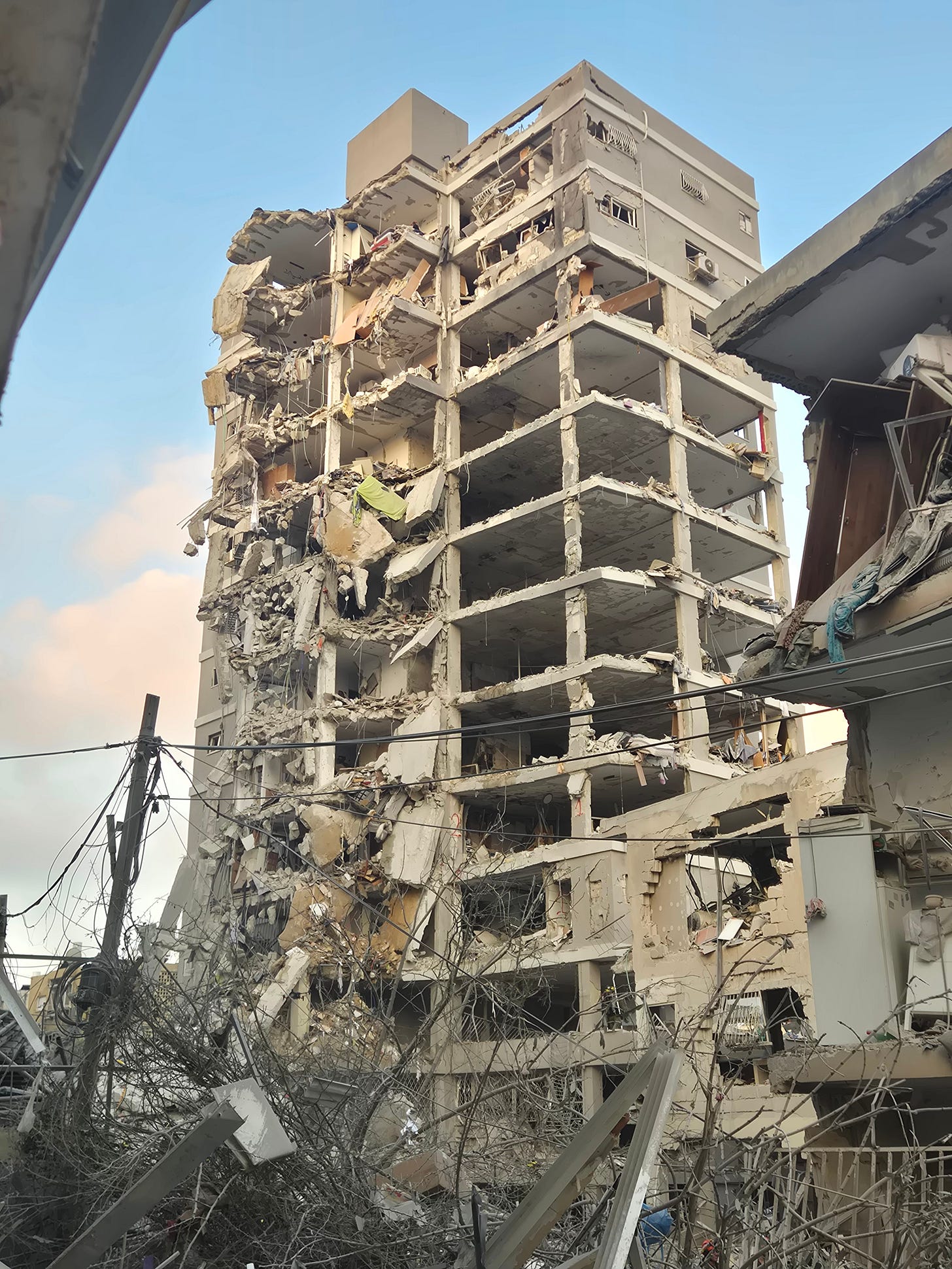Iranian Missile Impacts in Israel Underscore Costs of War
Both Israeli Prime Minister Benjamin Netanyahu and U.S. President Donald Trump struck a triumphant tone after the 12 day war against Iran in June. Yet, the ceasefire and destruction of core Iranian nuclear facilities, combined with the tight hold Israeli censors maintain on information regarding the war’s impact inside Israel, overshadowed an important development: Iran, despite being hobbled considerably by Israel’s surprise attack, was still able to land powerful missile strikes in the heart of Israel. Just like the toll of Israel’s strikes on Iran, which killed hundreds of innocent Iranian civilians from all walks of life, the war’s toll on Israeli civilians should underscore the need to prevent a further outbreak of conflict.
Despite the damage inflicted, Iran’s response to Israel’s attack has been nearly totally dismissed by some observers who suggest launching the war on Iran was cost-free. Part of this analysis is based on previous Israeli-Iranian exchanges, notably the Iranian reprisal strikes in April and October 2024 that were highly telegraphed and appear to have been designed to deliver a message and manage escalation, rather than overwhelm the multi-layered Israeli missile defenses and deal considerable damage. However, in the June 2025 war, both Israel and Iran took the gloves off and dealt each other considerable blows.
Missile strikes constituted Iran’s main form of retaliation. With approximately 530 missiles launched amid the war, Iran appears to have delivered at least 35 direct hits, though some estimates note as many as 65 hits inside of Israel. These strikes killed 28 Israelis and injured more than 3,000, while also dealing considerable damage to buildings and homes.

In the urban and suburban environment where some of Iran’s missiles landed, damage spread not just from direct missile hits but from powerful shockwaves, causing major damage to dozens of buildings at a time. As one senior officer at Home Front Command told Haaretz earlier this year, “This is what a scene of destruction looks like in an urban environment. The bombs we dropped in Lebanon created the same effect.” Yet in Israel “the number of casualties was different. There are only 29 dead and not hundreds because here you can go to a protected space and close the door.”
Below, a map from Haaretz’s report shows the widespread destruction caused by an Iranian missile impact in Ramat Gam, a Tel Aviv suburb.
Many Israelis emerging from nearby shelters would return to find their homes destroyed along with their possessions. Other buildings farther from the impact survived but were dealt considerable damage, such as windows and doors blown out. Like countless innocents inside Iran who fled the bombing of Tehran and other cities, thousands of Israelis were displaced amid the war, their lives turned upside down by the conflict.
This destruction added up. The Israeli Tax Authority noted that damage in the 12 day war led to a record 53,599 compensation claims from Israeli citizens. 36,928 of these dealt with private residences, while businesses accounted for 5,108 claims and vehicles for 5,400. The total damages are estimated to be in the billions of dollars, with compensation work ongoing.
Aside from the considerable damage to residential structures in Tel Aviv, its suburbs and other locations throughout Israel, Iranian missiles appear to have landed strikes on and near key Israeli defense sites as well as infrastructure including the Haifa oil refinery complex and the Weizmann Institute of Science.
Iran managed these strikes on Israeli territory amid some of the most challenging conditions imaginable. Israel eliminated the upper echelon of Iran’s military commanders in the opening hours of the war, disrupting Iran’s command and control and depriving the nation of critical experience dating back to the bloody Iran-Iraq war of the 1980s. With air defenses decimated, including by drone attack, Israeli strikes targeted Iranian missile bases and missile launchers, particularly in western Iran, limiting Iran’s ability to both access and launch a significant portion of its missile arsenal. Such conditions seem unlikely to be fully replicated in a future outbreak of war.
Despite these considerable setbacks, Iran’s military found its footing and showed an ability to penetrate Israel’s layered missile defense systems with increasing success as the war went on, and as missile defense stocks were being expended at a rapid rate. These trendlines augur poorly for Israel’s ability to limit damage in a future outbreak of war.
A rational actor might survey the damage Iran inflicted and determine that such a cost was prohibitively high and could easily have been much worse. Yet Israeli Prime Minister Benjamin Netanyahu and many of his allies in the government appear to have baked the costs of Iran’s retaliatory strikes into their decision to strike Iran in the first place, judging it worth the apparent gain of setting back Iran’s nuclear program along with its military and scientific capabilities on a temporary basis.
Yet the considerable costs to civilians on both sides should not be dismissed, particularly as the threat of more war still looms. Those who have pushed attacking Iran for years never suggested that it should be a one and done. Rather, they envisioned repeated military strikes on Iran. If they get their wish, that will likely mean repeated, powerful missile impacts inside of Israel as well.


